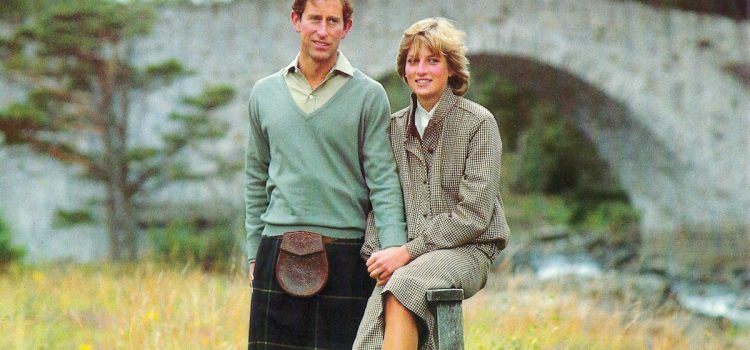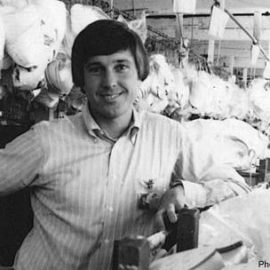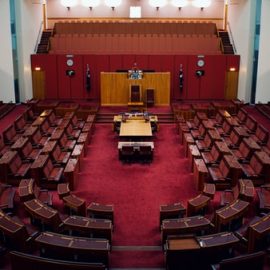
What really drove Princess Diana to seek independence from the royal family? How did her pursuit of freedom ultimately contribute to her tragic end?
In Diana, former royal protection officer Ken Wharfe provides an intimate look at Princess Diana’s divorce and her journey toward autonomy. His firsthand account reveals the complex dynamics within her marriage to Prince Charles and her determination to forge a new identity beyond royal constraints.
Keep reading to explore the fascinating details behind one of history’s most talked-about divorces and the price of seeking freedom from the British monarchy.
Princess Diana’s Divorce
The book examines the breakdown of Princess Diana’s marriage to Prince Charles and her quest to create a new identity beyond the royal establishment. Wharfe contends that Princess Diana’s divorce was intertwined with her genuine yearning for independence and self-sufficiency. He reveals her private plans to build a life separate from the royal family, suggesting that this desire for freedom may have contributed to her untimely death.
The growing alienation and bitterness within Diana and Charles’s marriage becomes evident through Wharfe’s account. Diana’s sense of exclusion intensified as Charles maintained his relationship with Camilla Parker Bowles, leading her to seek solace elsewhere. The deteriorating dynamics within the Wales household manifested through frequent conflicts and diminishing communication between the couple.
A turning point in both public perception and Diana’s private life came with the publication of Andrew Morton’s Diana: Her True Story. Though Wharfe was unaware of Diana’s secret involvement with the book, he sensed she was undertaking a dangerous venture during its creation. Diana was determined to expose the reality of her troubled marriage and sought recognition of her suffering from the royal family. The book’s revelations about Charles’s infidelity and Diana’s struggles with bulimia and depression not only damaged the Prince’s reputation but also challenged the royal family’s carefully maintained public image.
| Shortform Note In 1981, Diana married Prince Charles in what was initially portrayed as a fairy tale romance. However, beneath the surface, their union was plagued by challenges, including their considerable age gap and incompatible personalities. Diana’s personal struggles during her time as a royal were revealed in unprecedented detail through her collaboration with author Andrew Morton. Working through intermediaries and close friends, Diana provided Morton with recorded tapes detailing her thoughts and experiences, which would form the basis of his explosive book. The publication represented a major breach of royal protocol, as it exposed private matters and challenged the long-standing tradition of discretion within the royal family. Among the revelations was Diana’s battle with bulimia, which she developed as a response to the immense pressures of royal life and her troubled marriage. Her willingness to discuss this personal struggle helped destigmatize eating disorders and raised public awareness about these conditions. The book’s revelations had far-reaching implications, particularly for Prince Charles, whose reputation as heir to the throne was crucial for maintaining public support for the monarchy. These negative perceptions could potentially impact his future effectiveness as king. |
Diana’s Quest for Self-Identity and Independence
Wharfe characterizes the post-separation period as a time of significant personal growth for Diana. She was determined to forge her own path in life, independent of both her husband’s influence and the monarchy’s constraints. However, her efforts to develop an individual identity conflicted with her royal obligations, creating tension with the palace establishment. According to Wharfe, royal officials attempted to control Diana’s public image and curtail her independence by limiting her appearances at public events and removing her name from the Court Circular. These restrictive measures only intensified her determination to achieve autonomy.
| Shortform Note Following her separation from Charles in 1992 and their divorce in 1996, Diana embarked on a journey to redefine her role and identity beyond the confines of royal life. The monarchy’s emphasis on duty and service over personal desires, coupled with its strict hierarchy and traditions, often created significant constraints on individual freedom. This institutional framework made Diana’s quest for autonomy both challenging and noteworthy. In her pursuit of independence, Diana placed significant emphasis on her role as a mother to Princes William and Harry, adopting a more modern and hands-on approach to parenting that deviated from traditional royal protocols. Her exclusion from the Court Circular, the official record of royal engagements and activities, marked a tangible reduction in her official status within the royal framework, though it also granted her more freedom to focus on her personal interests and charitable work. Throughout this period, the media played a pivotal role in shaping public perception of Diana, frequently portraying her either as a victim of circumstance or as a rebel against the establishment. These narratives significantly influenced her journey toward independence and continued to shape her public image as she carved out her new role in the world. |
Diana’s quest for autonomy extended beyond establishing a unique public identity. According to Wharfe, the Princess longed for a life unburdened by royal duties and contemplated a complete separation from the royal family. He observed her growing frustration with the monarchy and her yearning for a more ordinary existence.
As Wharfe describes, Diana envisioned dissolving her marriage to Prince Charles and creating a life independent from the royal institution. As her discomfort with royal obligations intensified, she sought to forge a new path focused on charitable work and personal aspirations. Wharfe maintains that Diana viewed herself as a champion of the people, seeking a role that would transcend the limitations of her aristocratic background.
Wharfe argues that Diana’s determination to break free from the “system” ultimately contributed to her tragic and premature death. Her increasing disregard for security protocols became the main factor that ended their professional relationship. According to Wharfe, the fatal incident in Paris might have been prevented if Diana had kept her police protection. He maintains that her pursuit of independence, particularly her decision to reject Scotland Yard’s security detail, initiated a sequence of events that led to her untimely death.
| Shortform Note Diana’s complex relationship with security protocols and royal customs presents multiple perspectives worth considering. While she often preferred minimal security detail, this choice could be interpreted as a natural desire for normalcy and privacy rather than a cavalier attitude toward her own safety. It could be argued that her public and charitable work benefited from the platform provided by her royal status, which was, in part, upheld by those very customs she sometimes found restrictive. The matter of security responsibility is nuanced, as it should ideally involve a balanced approach between the protectee’s wishes and professional safety measures. The security team’s role includes adapting their methods to accommodate individual preferences while maintaining effective protection. Furthermore, the decision to employ private security services instead of police protection does not necessarily compromise safety, provided those private services are competent and well-managed. Tragically, it is worth noting that, even with a full security detail, the fatal accident might have occurred due to circumstances that were both unpredictable and beyond anyone’s control. |






